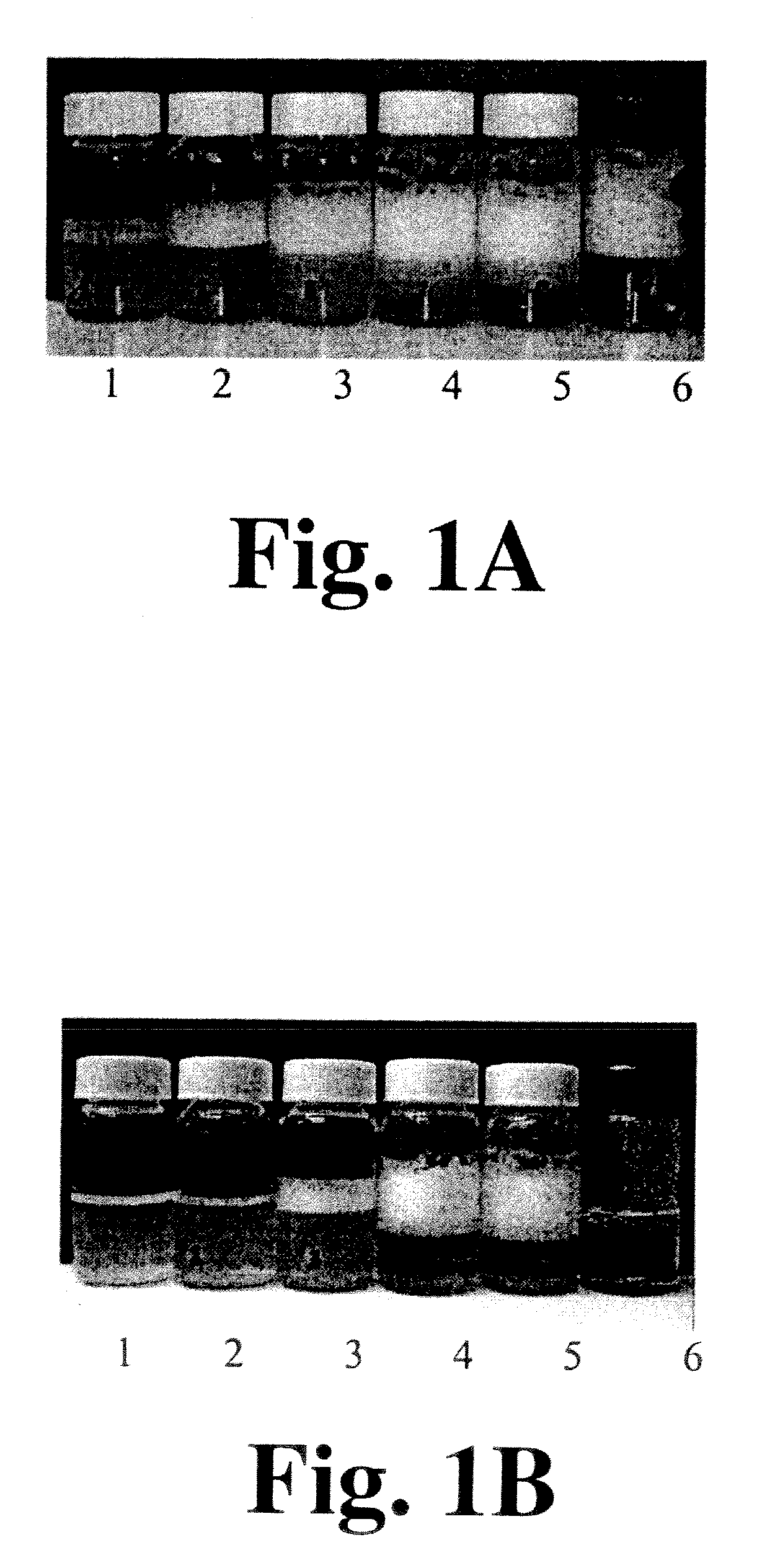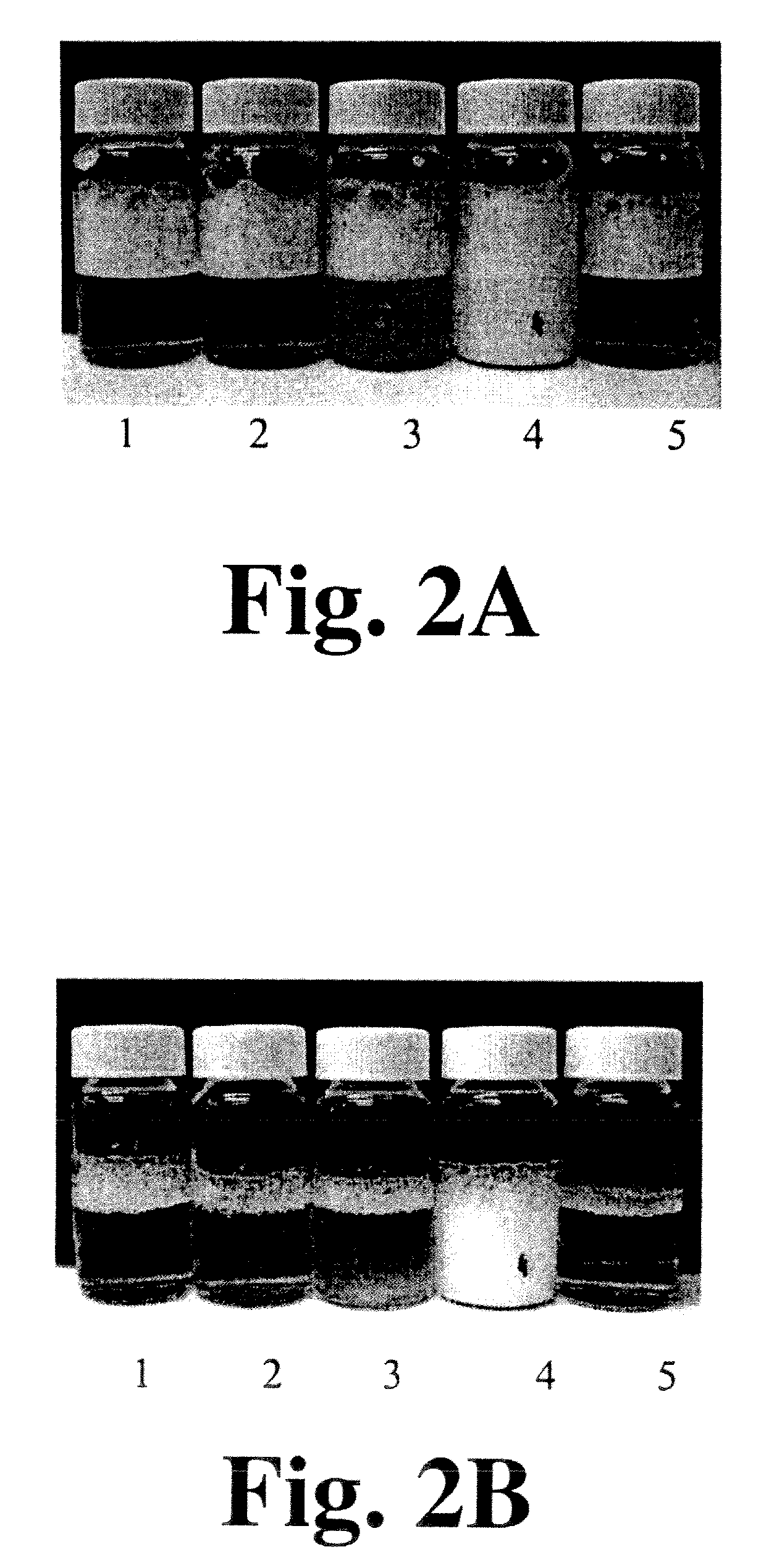Foam manipulation compositions containing fine particles
a technology of compositions and fine particles, applied in the field of compositions for stabilizing foam, can solve the problems of difficult rinse without, add to the cost of final product, and difficult to rinse away, so as to stabilize foam, boost foam formation, and reduce the level of foam
- Summary
- Abstract
- Description
- Claims
- Application Information
AI Technical Summary
Benefits of technology
Problems solved by technology
Method used
Image
Examples
example 1
Fabrication of Coated Silica Particles: Grafting of PDMS and PEI
[0074]PDMS (hydrophobic non-polar) and PEI (hydrophilic and polar) in water-toluene emulsions were used for grafting. The composition of the particle coating produced surface-active nanoparticles.
[0075]A1. Synthesis
[0076]The synthetic procedure starts with the covalent grafting of GPS to the silica surface via the reaction between the silanol groups on the silica surface and Si—OCH3 groups of GPS. The hydrophilic-hydrophobic balance of the particle coatings was regulated by grafting PDMS and PEI in the second and the third steps, respectively. A range of samples were prepared with different compositions of the particle coatings regulated by grafting time. The surface composition of the particles was not evaluated quantitatively.
[0077]Silica nanoparticles (particle size: 0.014 μm, surface area: 200±25 m2 / g) were dried in vacuum oven at 120° C. for 12 hours and then immediately used for silanization (see below). One gram ...
example 2
[0086]In these Experiments, foam was generated by vigorous hand-shaking vials (20 ml capacity) containing 10 ml of sample for 10 seconds. Each set of samples was shaken simultaneously providing equal conditions for foam generation. The amount of foam and its stability was evaluated visually.
[0087]Five samples were prepared, containing Silica particles of different degrees of hydrophobicity: (1) 7-10°; (2) 16-20°; (3) 28-32°; (4) 40-45°; and (5) 58-62° (see Table 2 below and FIG. 1). Silica particles, 1% wt., were dispersed in MEK by ultrasonication for 60 min. Then, DCDS was added (1% vol.), and the dispersions were stirred for the time and temperature set forth in Table 2 below.
[0088]After stirring, the particles were centrifuged at 7500 rpm for 20 min and redispersed in the same amount of MEK. There were in total three cycles of centrifugation-redispersion. During the third cycle, the particles were redispersed in deionized (DI) water. With the increase of the degree of hydrophobi...
example 3
[0091]The effect of hydrophilic silica particles of different sizes on foaming in the presence of an anionic surfactant, linear alkyl benzene sulfonic acid (LAS), was evaluated using a hand-shake experiment in the manner described above. The particles sizes ranged from an average diameter of 20 nm, 200 nm, and 1.75 μm for silica and an average diameter of 2.1 μm for titania. The samples are shown in FIG. 2 in vials marked 1, 2, 3 and 4, respectively. A solution of the surfactant, LAS at 100 ppm was used as a reference and is shown as vial 5 in FIG. 2. The concentration of particles in vials 1 through 4 was 1000 ppm.
[0092]All of the samples that contained particles produced almost the same amount of foam, which was slightly higher than the amount of foam produced by LAS alone (see, FIG. 2a). After five hours, as shown in FIG. 2b, the difference became even more pronounced, demonstrating that the presence of the particles improves the stability of the foam produced by an anionic surfa...
PUM
| Property | Measurement | Unit |
|---|---|---|
| contact angle | aaaaa | aaaaa |
| particle size | aaaaa | aaaaa |
| contact angle | aaaaa | aaaaa |
Abstract
Description
Claims
Application Information
 Login to View More
Login to View More - R&D
- Intellectual Property
- Life Sciences
- Materials
- Tech Scout
- Unparalleled Data Quality
- Higher Quality Content
- 60% Fewer Hallucinations
Browse by: Latest US Patents, China's latest patents, Technical Efficacy Thesaurus, Application Domain, Technology Topic, Popular Technical Reports.
© 2025 PatSnap. All rights reserved.Legal|Privacy policy|Modern Slavery Act Transparency Statement|Sitemap|About US| Contact US: help@patsnap.com



